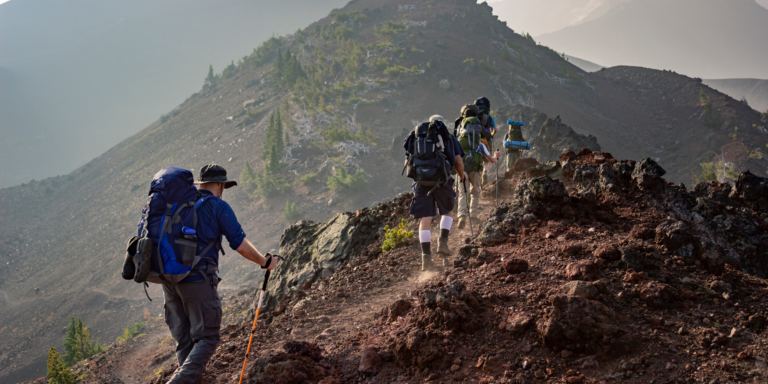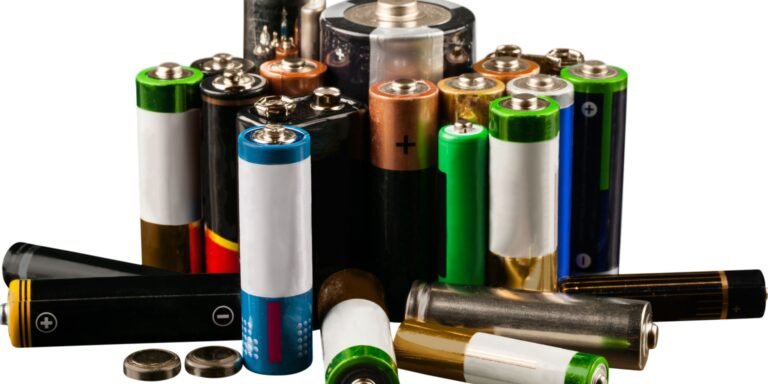26 Important Items To Add To The Emergency Kit For Your Car
This post may contain affiliate links, full disclosure here.
While the weatherman has already predicted inclement weather and record snow and ice storms, we have been reviewing our car emergency kit in preparation for whatever is yet to come…
“Isn’t that what bug-out bags are for – in case of emergencies?” you may be thinking. And you’d be completely correct! However, roadside emergency preparedness is distinct in that it extends far beyond the basic bug out bag required for survival.
If you or someone you know travels a long-distance or commutes on a daily basis, such as our friend here, having an emergency car kit can mean the difference between getting back on the road quickly and being stranded for hours while waiting for help, often in hazardous conditions.
So keep reading because today we’ll go over how to make the Ultimate Car Emergency Kit to help you get out of all sorts of jams. By the way, if you need to know which foods to store in your car long-term, here are some basics to get you started: Emergency Foods You Should Keep In Your Vehicle.
Keep in mind that if you take the time and care to gather these items, they will be an excellent addition to any bug-out bag in your vehicle. Perfect for when you’re out and about and you or someone you come across needs roadside assistance.
Emergency Items that Everyone Should Keep in Their Car
Every car should have at least the following items:
- Durable canvas bag to store supplies
- No-spill gas can (2-5 gal.)
- Jumper cables (12-20’, be sure to get the right gauge for your vehicle)
- Roadside flares/glowsticks (4, check out these reusable LED flares)
- Flat tire inflation canister (non-explosive)
- Spare tire and jack
- Spare car fuses
- First aid supplies kit
- Bottled water (2-3 gal.)
- Granola / energy bars
- Small tool kit (screwdrivers, pliers, vise grips, adjustable wrench, tire pressure gauge, etc.)
- Flashlight and extra batteries or flashlight that doesn’t need batteries
- Small, foldable shovel
- Car escape tool (incl. seatbelt cutter and window breaker)
- Road maps
- Blankets
- Extra gloves, boots, wool socks, stocking cap (for colder climates)
- Car fire extinguisher (ABC type) [Read our article on how important a car fire extinguisher can be here]
- Antifreeze (1 gal.)
- Two quarts of oil
- Roll of duct tape
- Paper towels / rags
- Washer fluid
- Pen and paper
- Multipurpose tool
- Seasonal supplies (rain gear, umbrella, ice scraper etc.)
Additional Items You Might Consider Just In Case
- Hand-held GPS unit
- Towing strap or chain
- Sanitation (hand sanitizer, towelettes, small trash bags)
- Emergency car battery charger
- Solar battery charger
- Extra pair of shoes, gloves etc.
- Toiletries, soap, etc.
- Cell phone charger (left in car at all times)
- Battery powered and/or Hand crank radio
- Sleeping bag(s)
These ten items are the bare necessities for any car emergency kit, but you should also consider your specific needs. “What can’t I live without if I’m stuck in my car for a day or more?” ask yourself.
Sure, there are a few companies that sell pre-assembled roadside emergency kits, and they may be useful in a pinch. They’re certainly preferable to nothing… Nothing, however, beats a custom-built kit, personalized for your specific needs, much like a bug-out bag.
Winter Emergency Car Kits
In an emergency, the National Safety Council recommends carrying the following items with you at all times, in addition to a full tank of gas and fresh antifreeze:
- Blankets, mittens, socks and hats
- Ice scraper and snow brush
- Flashlight, plus extra batteries (or a hand-crank flashlight)
- Jumper cables
- First-aid kit (band-aides, adhesive tape, antiseptic wipes, gauze pads, antiseptic cream, medical wrap). See a first-aid kit checklist.
- Bottled water
- Multi-tool (such as a Leatherman multi-tool or a Swiss Army knife)
- Road flares or reflective warning triangles
- Windshield cleaner
- Add the following items to your emergency kit if you live in a wintry snowy area. (If you live somewhere where it’s warm all winter, be thankful that you don’t need all of this!)
- A bag of sand to help with traction (or bag of non-clumping cat litter)
- Collapsible or folding snow shovel
- Blanket
- Tire chains and tow strap
- Hand warmers
- Winter boots for longer trips
- Sleeping bag for longer trips
De-icing salt should be used to de-ice driveways and roads. (However, excessive salinity can harm vegetation and contaminate groundwater.) So, keep this in mind when salting your driveway, and try not to use more than is necessary.)
Other Essentials:
- Small fire extinguisher (5-lb., Class B and Class C type) in case of a car fire
- Tire gauge to check inflation pressure in all four tires and the spare tire
- Jack and lug wrench to change a tire
- Rags and hand cleaner (such as baby wipes)
- Duct tape
- Foam tire sealant for minor tire punctures
- Rain poncho
- Nonperishable high-energy foods such as unsalted and canned nuts, granola bars, raisins and dried fruit, peanut butter, hard candy.
- Battery– or hand-crank–powered radio
- Lighter and box of matches (in a waterproof container)
- Scissors and string or cord
- Spare change and cash
- Compass
- Paper maps
Winter Driving Tips To Keep In Mind
- Be cautious of black ice. Roads may appear to be clear, but they may still be slick.
- Stuck in a rut with no traction and no sand or cat litter? In a pinch, remove your car’s floor mats, place them next to the tyres, and slowly inch the car onto and across the mats.
- Check that the windows are defrosted and clear. Also, make sure to clear snow and ice from the vehicle’s roof! To keep ice and snow from sticking to your windshield, gently rub a small, moistened cloth bag of iodized salt on the outside.
- Smooth the rubber blades with fine sandpaper to remove any grit and pits and restore proper windshield wiper blade action.
- Shaving cream can be used to defog your mirrors and the inside of your windshields. Spray it and then wipe it away with paper towels.
- Increase the following time to 8 to 10 seconds.
- Avoid using your parking brake in cold, rainy, or snowy weather if at all possible.
- In cold weather, avoid using cruise control.
- Look around and steer in the desired direction. Slowly accelerate and decelerate.
- Check to see if you have antilock brakes, which will “pump” the brakes for you in the event of a skid.
- When going uphill, try not to stop if at all possible.
- Distress signals can be made with a brightly coloured cloth tied to the antenna or in a rolled-up window.
Become Familiar with Your Emergency Car Kit
Once you’ve assembled your emergency car kit, make sure you’re familiar with the contents so that you know how to use it properly in an emergency. Remember that nothing can ever replace sound judgment. If you have car trouble on a busy road, you should probably stay in your car and call for help. In other situations, however, getting out of your vehicle and attempting to change a car tire on your own may be acceptable. We do recommend that you have two sets of eyes in most situations because it helps most people exercise better judgment in a stressful situation.
When you’re broken down on the side of the road, always turn on your hazards to warn other drivers passing by to slow down. If you have reflective cones or triangles in your emergency roadside kit, place them out to warn oncoming traffic.
Learn How to Change a Car Tire
According to AAA, a car with a flat tire is one of the most common calls received by their roadside service team. To prepare for an unfortunate tire problem, read this article Steps for Changing a Flat Tire. AAA also mentions that they frequently receive calls about drivers failing to perform basic maintenance on their vehicles, so make sure your vehicle receives regular maintenance, especially before going on a trip and at the change of seasons.
Unfortunately, there isn’t a single tool that can handle all roadside emergencies. However, with some simple planning and a few minutes of organization, you can put together a kit that could significantly improve an otherwise tragic experience and potentially save your traveling family.
Car Emergency Kit Checklist Bottom Line
You may be thinking to yourself as you look at these emergency car kit checklists, “This is excessive, I will never need half of this stuff… Besides, there isn’t enough room in my car’s small trunk.” The truth is that it’s easy to feel this way until something unexpected happens and your car breaks down at the worst possible time and place. One of my top priorities is to keep my family safe! Having a couple of kits for different seasons of the year and different travel situations will benefit everyone who uses them.
While it’s great to have your car stocked and ready for an emergency, don’t forget to teach your kids how to survive (How To Prepare Your Children For The Coming Chaos) and learn which weeds you can eat (Weeds You Can Eat If You’re In Survival Mode) so you’re prepared for many more emergency situations than just a car breakdown.








